#Cyanobacteria
Explore tagged Tumblr posts
Text
Iron probably didn’t rust much before Cyanobacteria.
Copper never turned green
Think about that…
Then the Cyanobacteria came in, and all the iron that surfaced during varying periods of time all rusted at once
2K notes
·
View notes
Text








Lathagrium cristatum
Fingered jelly lichen
Today on "you probably shouldn't call it that . . . " we have L. cristatum, aka *sigh* fingered jelly lichen. This foliose cyanolichen gets it's common name from its deeply branching lobes that someone who had apparently never seen fingers before thought looked like fingers. It has a dense, gelatinous, olive-green thallus when moist, and a thinner, channeled, brown-black thallus when dry. It produces lecanorine apothecia with red-brown disks. L. cristatum grows on exposed, calcareous rock, walls, and occasionally sandy soils. It can be a bit variable in growth form, and so may represent a species complex throughout its global range.
images: source | source | source
info: source | source | source
#lichen#lichens#lichenology#lichenologist#mycology#biology#ecology#fungi#fungus#jelly lichen#cyanobacteria#nostoc#symbiosis#symbiotic organisms#Lathagrium cristatum#Lathagrium#trypo#trypophobia#I'm lichen it#lichen a day#daily lichen post#lichen subscribe#the natural world#beautiful nature#weird nature#natural science#environmental science#life science
80 notes
·
View notes
Text
Edit: Corrected information given:
"[T]he water in Lake Tahoe had testing done, the results of which came back literally three days ago showing very, VERY low percentages of the toxins being talked about in that video, and only in very specific parts of the lake. Meaning there was not enough present to cause severe effects in people, or pets. There WAS a small, backwater pond separate from Lake Tahoe reported to have a HAB bloom on the NV side, but it does not effect the rest of the lake."
Article link: https://www.tahoedailytribune.com/news/no-harmful-algal-bloom-detected-at-lake-tahoe-sites-purported-to-be-responsible-for-dogs-death/
239 notes
·
View notes
Text
Whoooooo wants keychains?
I was originally going to wait until the keychains got here to put them on sale, but I'm getting antsy, so they're on preorder! I estimate I'll receive all of them in a few days and then they'll ship out immediately, if you dare to purchase one. 😈
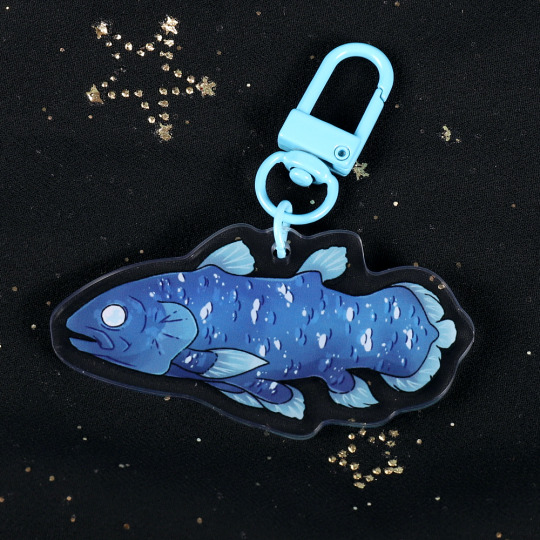
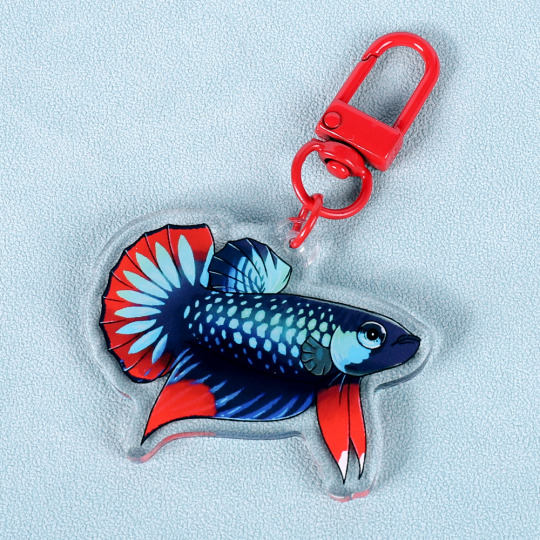
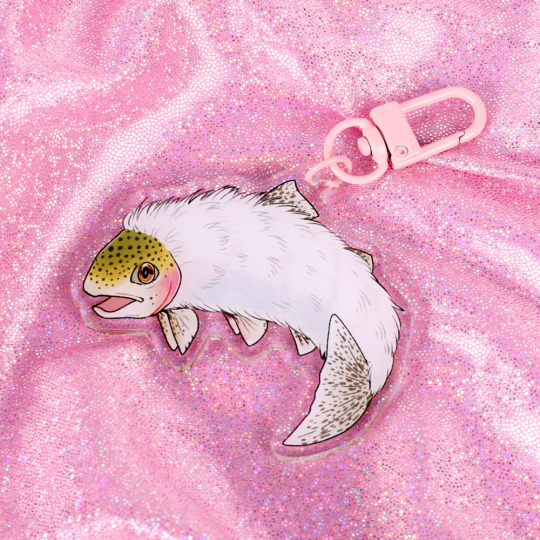
First up, a bunch of friendly fishy keychains! A coelacanth, a wild type betta, and a furry trout.
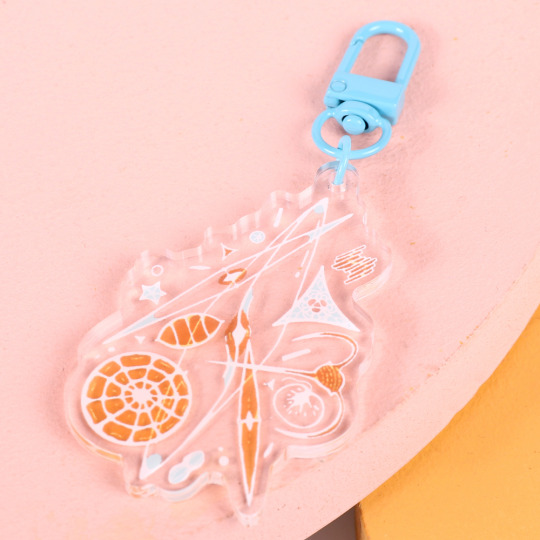
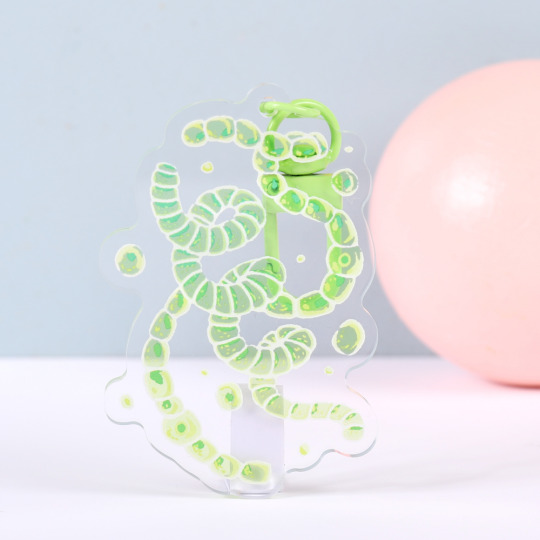
Then, some algae! Featuring shapely diatoms and dinoflagellates, as well as some nice green cyanobacteria.
Check them out here! https://garblegoods.bigcartel.com/
#diatoms#cyanobacteria#microbes#microbiology#fish#betta#coelacanth#cryptids#keychains#merch#i never know how to tag these
292 notes
·
View notes
Text
Cyanobacteria, an ancient lineage of bacteria that perform photosynthesis, have been found to regulate their genes using the same physics principle used in AM radio transmission. New research published in Current Biology has found that cyanobacteria use variations in the amplitude (strength) of a pulse to convey information in single cells. The finding sheds light on how biological rhythms work together to regulate cellular processes.
Continue Reading.
#Science#Biology#Microbiology#Molecular Biology#Cyanobacteria#AM#Amplitude Modulation#Circadian Rhythm
74 notes
·
View notes
Text
‘Oh yum is that boba in your milk tea?’
Wrong. Nostoc pruniforme
#phycology#nostoc#nostoc pruniforme#boba#boba is the closest I can get to munching on those guys#I’m not above trying one#Cyanobacteria
42 notes
·
View notes
Text
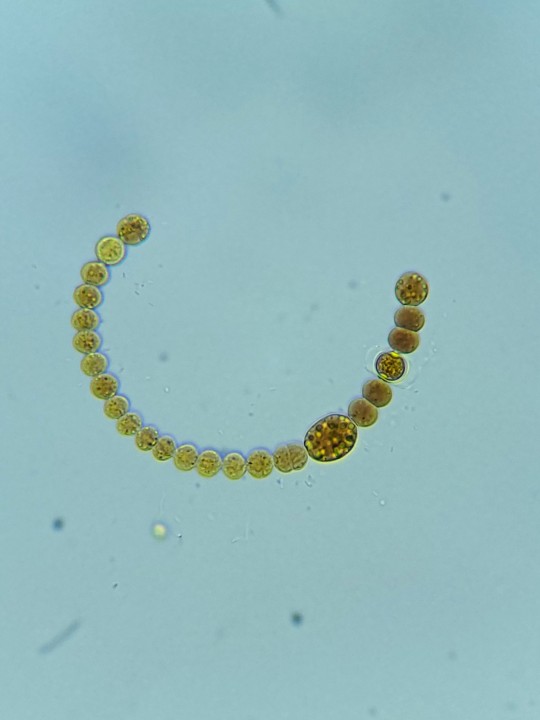
Today's little bit of joy is brought to you by this absolutely perfect filamentous cyanobacteria specimen. This beauty sits perfectly in a single plane, the whole thing in focus, and has both a heteorcysts AND an akinete.
182 notes
·
View notes
Text



I made a character based on Cyanobacteria!
#cyanobacteria#bacteria#microbiology#art#illustration#characterdesign#originalcharacter#charactersheet#science#microbiologymeetscharacterdesign#artists on tumblr
35 notes
·
View notes
Text
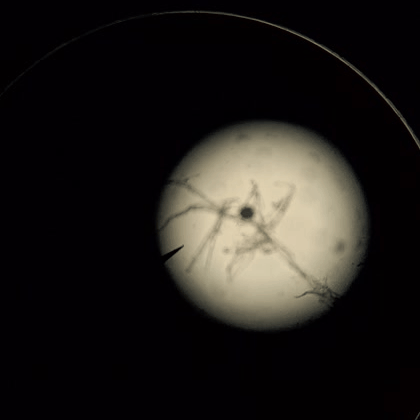
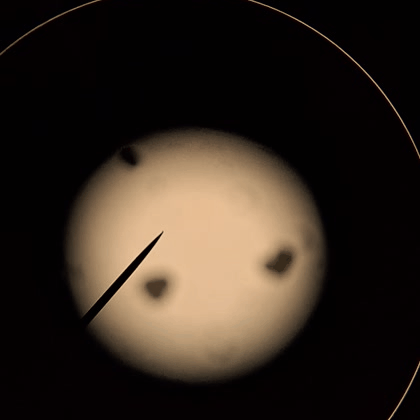
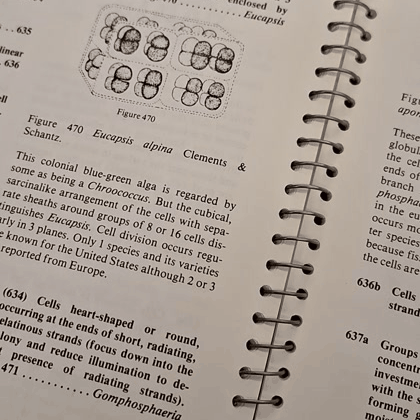
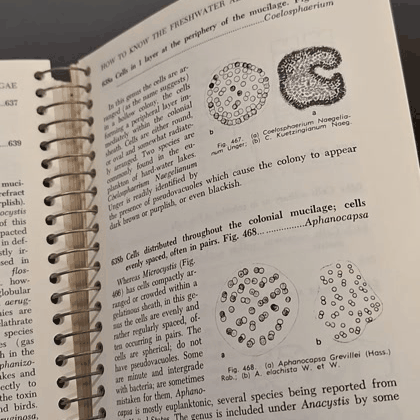
Cyanobacteria research
181 notes
·
View notes
Text

Merismopedia elegans
Photo credit: Jason Oyadomari/Keweenaw Algae
#merismopedia elegans#merismopedia#algae#cyanobacteria#halloween#halloween mask#halloween costume#superheroes#superhero masks#four of them can share a mask#im not putting that many masks on#plus it'd be harder to see them#microbiology#microbes#biology#hat#hats#microbes in hats#microorganisms#bacteria#protozoa#microscopy
29 notes
·
View notes
Text

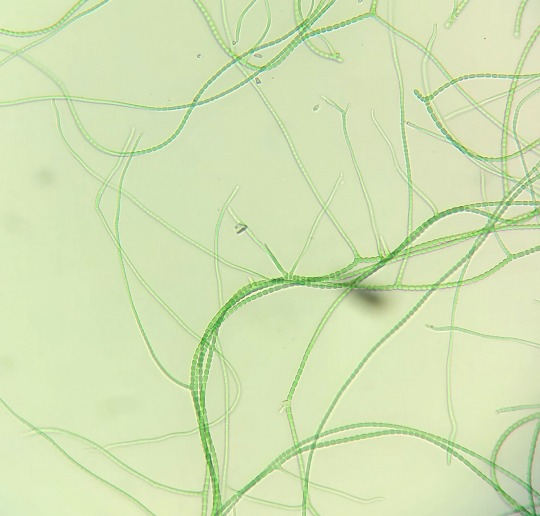
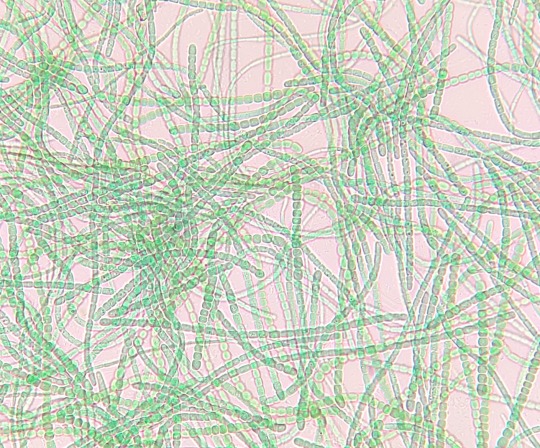
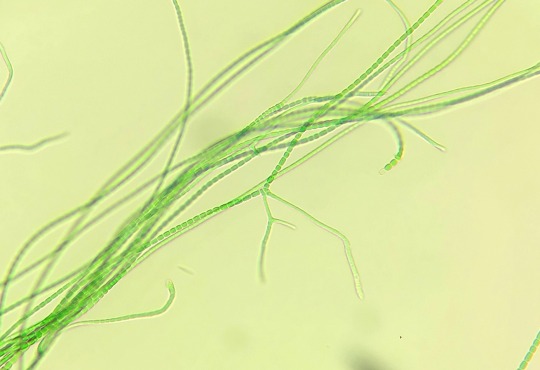
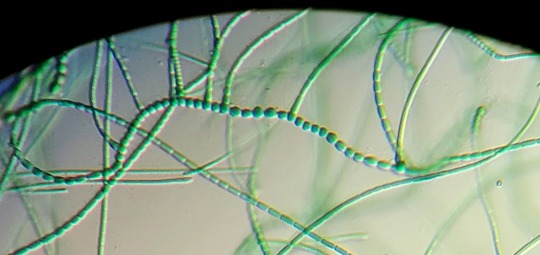
:-]
86 notes
·
View notes
Text
Excerpt from this story from Smithsonian Magazine:
Under the dry, piercing heat of the Utah sun, Sasha Reed is growing plots of plants—and bacteria, lichen and fungi, too. But Reed is no farmer, and at first glance, her fields look to be mostly dirt. She’s an ecologist, and what she is growing is cryptobiotic soil.
Also called biocrust, cryptobiotic soil is a community of tiny, dirt-dwelling organisms that form a distinct crust on the top of soil in arid landscapes. These crusts are vital across Earth’s dryland ecosystems, helping to hold loose soil together and prevent erosion. They retain water, provide nooks for other microbes to live in and add nitrogen to the soil.
Cryptobiotic soil often looks like a discolored patch of ground. Upon closer inspection, the stain becomes a mosaic of small, dark lumps, dotted with tiny beds of moss and inconspicuous patches of lichen. But it can also look very similar to regular, crusty soil. Although the crunchy earth might be tempting to trek over, like stomping through a pile of crisp autumn leaves, that’s a major faux pas: Biocrust can take decades to regenerate.
And these days, in addition to getting crushed by boots, biocrusts are threatened by another kind of human footprint: climate change. So researchers are diligently working to learn more about the crusts and how to restore them.
“It’s been a pretty busy but also exciting time, because we’re kind of inventing how to do this,” says Anita Antoninka, a plant and soil ecologist at Northern Arizona University in Flagstaff who studies the crusts.
The drylands where biocrusts reside are vital ecosystems, she says, but they are some of the most degraded around the globe. As biocrusts decline in these areas, soil fertility will drop, and wind erosion will blow away the loose, unprotected dirt. Less water will soak into the ground. Even the carbon cycle could be affected, as there will be fewer tiny life forms absorbing carbon dioxide.
Biocrusts cover around 12 percent of Earth’s land surfaces and inhabit every continent in the world. A major component of these crusts is often photosynthesizing bacteria called cyanobacteria. The cyanobacteria form sticky filaments that act like glue in sandy desert soil, creating a clumpy, crusty surface where fungi and other bacteria take hold.
20 notes
·
View notes
Text
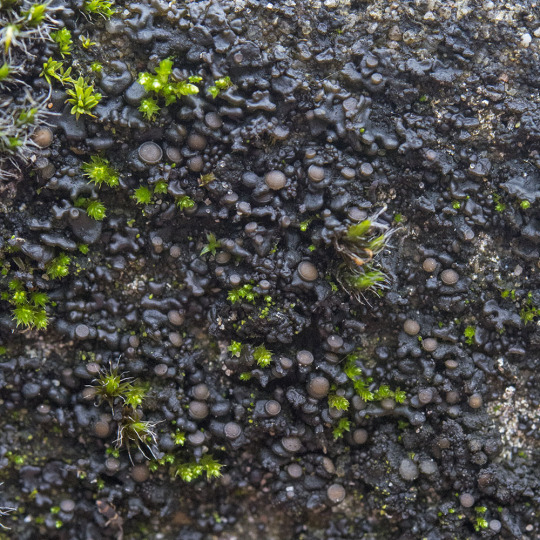
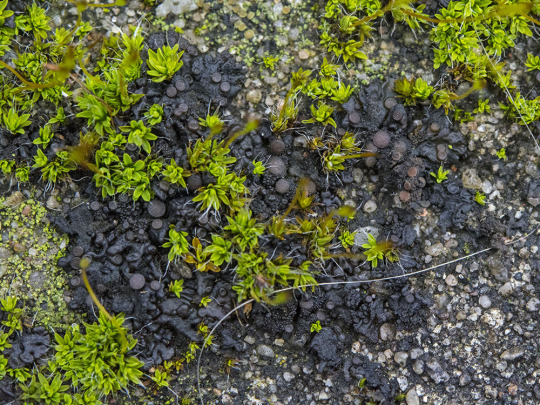
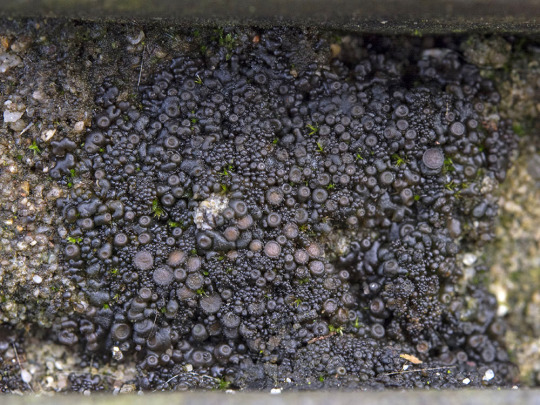

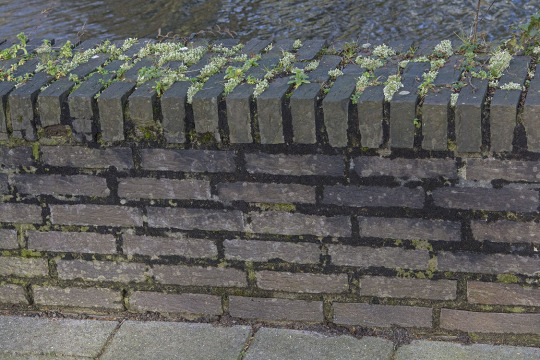


Scytinium turgidum
When I see people tag my lichen posts with #plant, I have to admit, a part of me dies inside. Because like, cyanolichens like S. turgidum have to plants parts. This guy is composed of an ascomycete fungi and a cyanobacteria -- no plants involved whatsoever. This jelly lichen grows on calcareous rock often inundated with runoff. It has shiny red-black to blackish-olive lobes which are wrinkled and thin when dry, thick and gelatinous when wet. The upper surface is covered in granular isidia, and often brownish-red apothecia. S. turgidum has a Nostoc photobiont.
images: source
info: source | source
#lichen#lichens#lichenology#lichenologist#mycology#ecology#biology#fungi#fungus#symbiosis#symbiotic organisms#cyanobacteria#nostoc#Scytinium turgidum#Scytinium#trypo#trypophobia#nature#the natural world#beautiful nature#weird nature#life science#environmental science#I'm lichen it#lichen a day#daily lichen post#lichen subscribe
1K notes
·
View notes
Text

Blue-green algae, or cyanobacteria, can produce extremely harmful toxins for dogs. When ingested, these toxins can cause severe symptoms such as vomiting, diarrhea, weakness, and even liver failure. Dogs can be exposed by drinking or swimming in contaminated water. To protect your pet, always keep your pet away from water with visible algae blooms.
#pet#pets#dog#dogs#cat#cats#petstore#dogsafety#bluegreenalgae#algae#cyanobacteria#petsafety#catsafety#algae bloom#green algae#animals
24 notes
·
View notes
Text


AAAAAAA
THEY LITERALLY JUST DECIDE YES THIS ONE IS OKAY AND HOLD ONTO EACH OTHER
They hold onto each other and form a community like we do I'm totally not sobbing over this
#Yes im romanticising bacterial life#It's Tumblr after all#What if we were two cyanobacteria and decided to hold onto each other#Life imitates life#biology#science side of tumblr#cyanobacteria#algae
134 notes
·
View notes
Text
Stanford researchers have found a surprising genetic twist in a lineage of microbes that may play an important role in ocean carbon storage. The microbes, known as blue-green algae or cyanobacteria, have two different forms of a ubiquitous enzyme that rarely appear together in the same organism. “This is one of those great examples of science where you go out looking for one thing, but you end up finding something else that’s even better,” said Anne Dekas, an assistant professor of Earth system science at the Stanford Doerr School of Sustainability and senior author of the Nov. 25 study in Proceedings of the National Academy of Sciences.
Continue Reading.
81 notes
·
View notes